What Happens Next is Up To Us
In July 1931, more than 4,000 people in Minneapolis participated in what newspapers labeled a "mob" and a "riot." They vandalized property, threw rocks and even killed a dog. Some had come from as far away as Hibbing, a small mining town 200 miles to the north. The rioters were white people incensed at the purchase of a two-bedroom home in South Minneapolis by a black couple, Edith and Arthur Lee, and their six-year-old daughter. By 1932, they had terrorized the Lees into moving out.
This was only one of countless incidents in a story replayed in many American cities in which non-white residents were excluded from white neighborhoods, both by racial deed restrictions (in the Twin Cities these are documented today by the Mapping Prejudice project) and often by violence or the threat of violence. Meanwhile, predominantly non-white neighborhoods were redlined into decline: banks refused to lend in minority areas, and this along with prejudice created a narrative of "bad neighborhoods" that was soon its own self-fulfilling prophecy.
In 1967, a very different set of Minneapolis residents rioted. Fed up with racial discrimination along with insufficient housing, jobs, and city services, black residents protested on the city's redlined Northside, while a smaller number of mostly young men firebombed buildings and threw rocks along a commercial stretch of Plymouth Avenue. The historic business district there never recovered.
This is not a post about riots, why they happen, or who's right or wrong. If you have strong feelings about that, try to leave them at the door as you read this. What's clear is that riots are a sociological phenomenon and a symptom of much deeper problems: the federal Kerner Commission told us as much in 1968. What's also clear is that riots are not a simple phenomenon: the participants have a range of motivations, from protest to to economic desperation to simple thrill-seeking, to the desire to instigate violence in order to blame someone else or control a narrative. (All of these are in evidence in Minneapolis.)
This post is more about what causes a neighborhood to decline or prosper. The riots of the 1960s are blamed to this day in many cities for accelerating decline and population loss—as white residents and those of means fled for the perceived safety of the suburbs. I’m seeing people make the assumption that 2020’s unrest will be similarly devastating for the revitalization prospects of these neighborhoods. That it dooms them to a new era of poverty and blight.
I’m not so sure. It's not inconceivable, but the social and economic conditions today are completely unlike those that scared people away from the "inner city" in the 1960s. And furthermore, much of the future of a community hinges not on tangible things—like the condition of its streets and buildings, or its access to jobs and recreation—but also on intangible narratives. If people, both inside and outside of a community, believe a place is declining, property values and investment will reflect it. If people cast a collective vote of confidence, they will reflect that as well.
The key, though, is that it's now up to all of us. It's up to those who live in these places, and to everyone who loves and cares for these places. The time is now to double down on that care. Don't let anyone write off your neighborhood, street, or community, regardless of the reason. If you are in a place where outsiders expect you to succumb to the psychology of decline, commit to doing exactly the opposite in the coming months and years.
A "Quiet Army of Generosity"
An extremely positive sign—one you’re likely seeing less of in the national news than talk of riots or looting—is what the Minneapolis Star Tribune recently called the "quiet army of generosity" that has quickly arisen in response to the crisis: residents caring for their neighborhoods, repairing damage, distributing needed supplies, and organizing for mutual support and protection.
As early as Saturday morning, there was incredible turnout for neighborhood cleanup efforts on Minneapolis's Lake Street and St. Paul's University Avenue—the crowd of people grabbing brooms and getting to work rivaling some of the protests themselves.

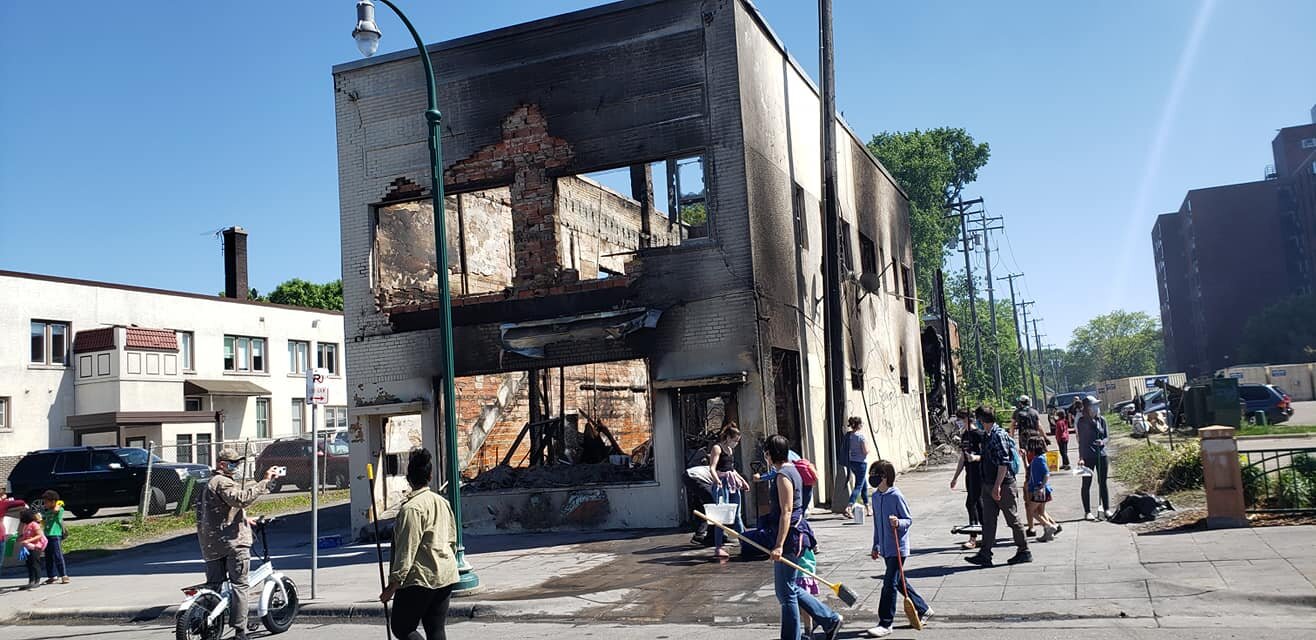
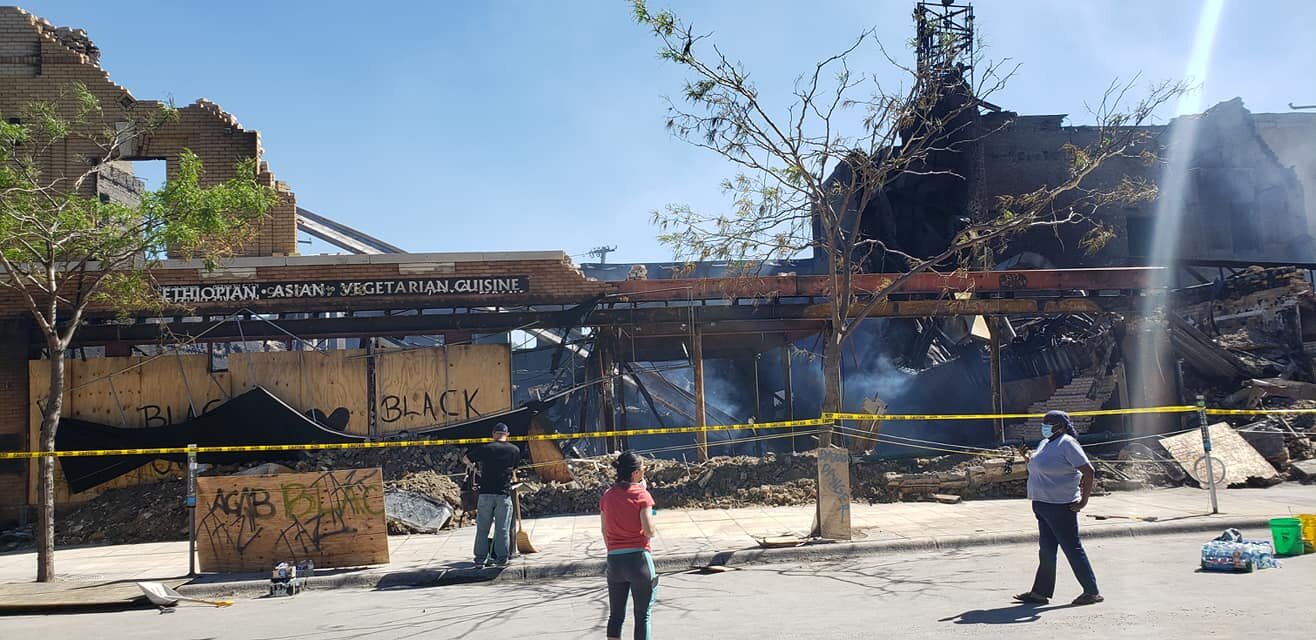
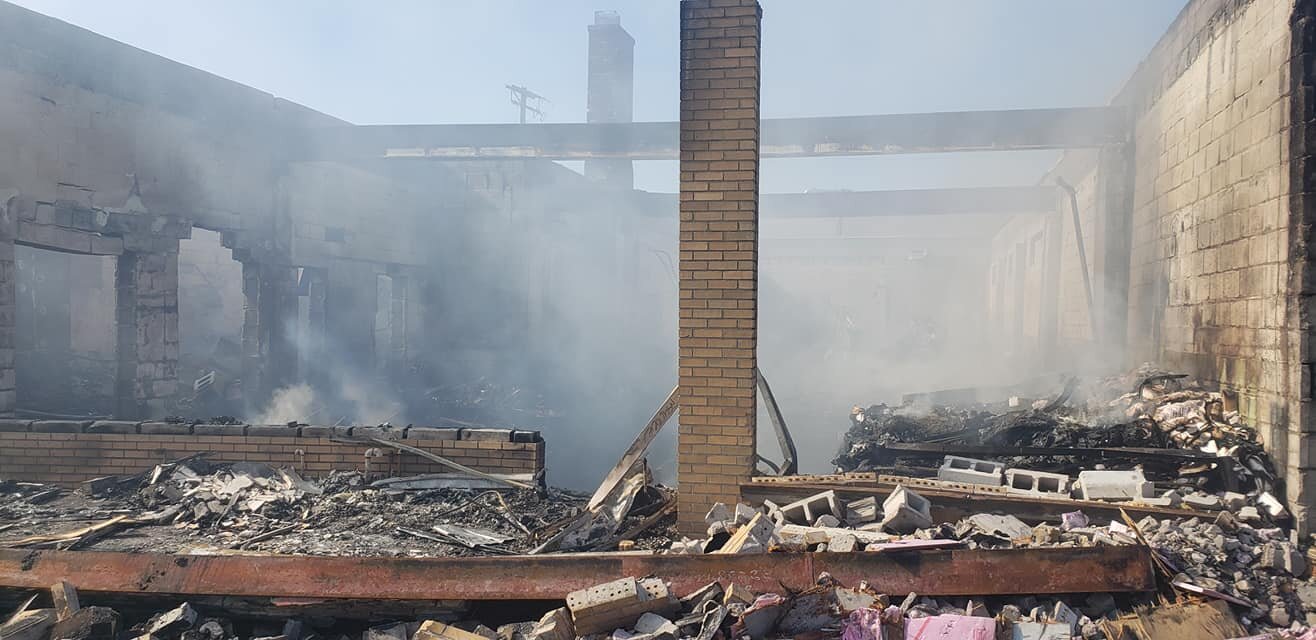
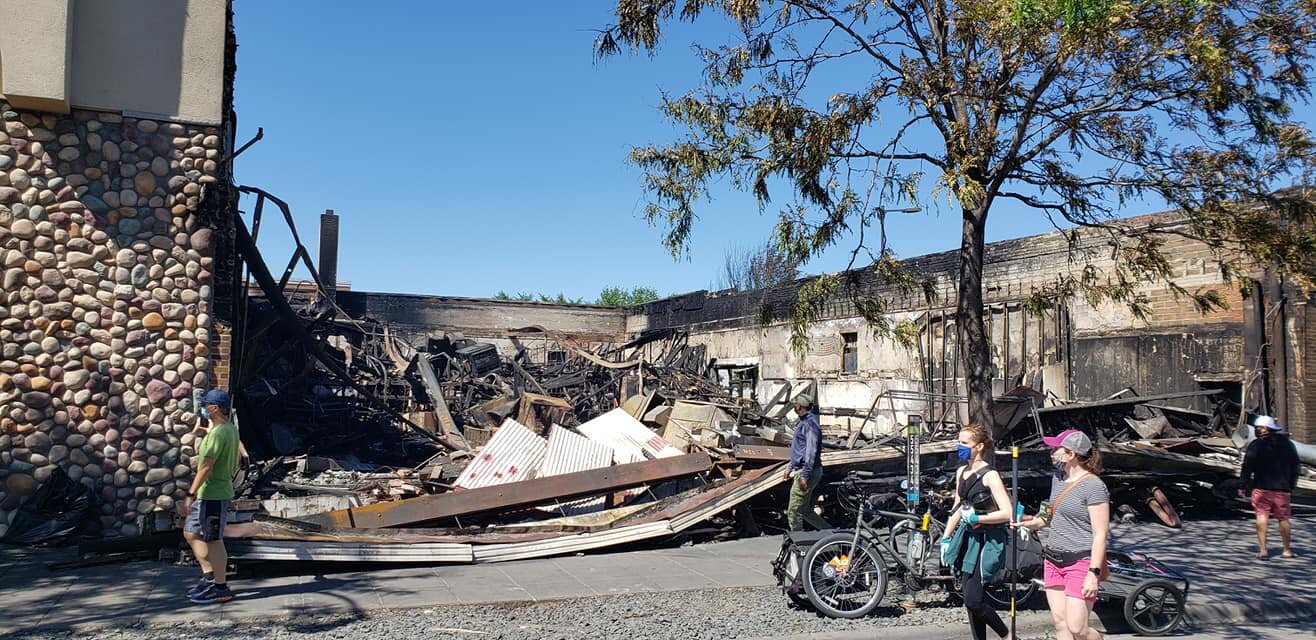
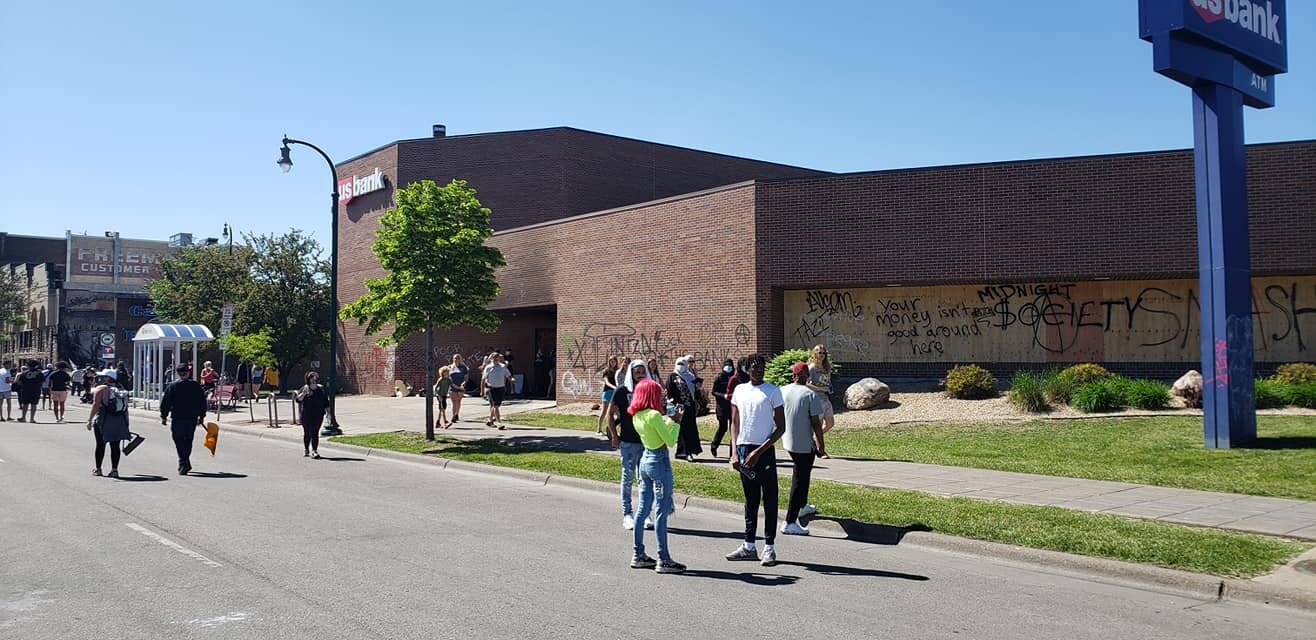
(Above photos by Adrian Perryman)
On St. Paul's East Side, residents preemptively set out to help board up local buildings and protect them from vandals:
Residents have organized to hand out food, diapers, baby wipes, and so on in neighborhoods where every essential store may be damaged or closed, and where the coronavirus pandemic means many were already out of work and strapped for cash:
There have been impromptu medical stations, including inside some of the small businesses that ended up damaged.
Neighbors have also organized for mutual security, amid a confusing weekend situation in which vandalism and arson spread beyond the initial protest area and, considerable evidence suggests, was being primarily committed by groups from outside the city. Neighbors exchanged contact info and security tips, and set up impromptu overnight patrols.
Local nonprofits have gone into fundraising overdrive with astonishing, rapid success. On Lake Street, in St. Paul's Midway, and in North Minneapolis, crowdfunding is helping small businesses and nonprofits to rebuild and recover. These are not new organizations, but the way they've been able to scale up a meaningful financial response under the circumstances is breathtaking. And it will be of genuine help to corridors that suffered from disinvestment long before the current unrest.
So here's a question: What would it take to keep doing these things?
This question is not to suggest that these efforts are a substitute for formal institutions. Things like neighborhood food donation drives would, of course, be much harder to sustain over time than as a one-time event, and are no substitute for the variety and consistency of supply provided by the market mechanisms that put products in stores at prices people will pay. And certainly bottom-up neighborhood policing is no panacea, even for a police department mired in scandal that has lost the confidence of a sizable portion of the public. (Remember who killed Trayvon Martin in Florida in 2012: the neighborhood watch, not the police.)
But what is true is that formal institutions can be paralyzed by fast-moving crises. And even before those crises, they can become ossified, be bogged down by legacies of mismanagement or debt or wrong priorities, or simply lack the right tools to address new problems. And when that happens, not only do informal, bottom-up mutual support efforts brilliantly and speedily fill the gap, but they may provide templates for something that could scale and endure. At best, they may provide a way for beleaguered communities to begin to acquire real power, bypassing the systems that have refused to allow them any.
I sincerely hope this is the case with the crowdfunding for small-business support and community development, in particular. The community who lives around these streets deserves some ownership stake in what happens there, and maybe this evolves into a better way to produce and maintain that stake. Personally, I would love to see a next step be crowdfunding the acquisition of damaged or destroyed properties by community land trusts (CLTs) like this one.
The Need for "Mystic Patriots"
I want to close on a more personal note. I was born 17 years after the Plymouth Avenue riots, and grew up a white boy in a middle-class part of St. Paul. I learned little about my city's ugly racial history: I hadn't heard the word "redlining" until after I graduated from college (and I know of few worse indictments of the American history curriculum than that fact).
What I did grow up with was a hefty dose of Minnesota exceptionalism—every white kid raised in that state does. If you're not from Minnesota, then chances are you've had the experience of meeting someone who is and rolling your eyes as they expound on how wonderful it is there. (And yes, I've been the guy expounding many times.)
Like every caricature, it's based in truth: there's a lot of good that can legitimately be said about the schools, parks, pragmatic governance, and high levels of civic engagement. But the ability to partake of those benefits has always been highly conditional on the color of your skin. Statistics I’ve learned as an adult bear out what I didn't grasp, and certainly couldn't explain, as a kid: the Minneapolis-St. Paul region has some of the worst black-white racial disparities in the country, including in income, educational outcomes, and homeownership rates.
That fact doesn't make me love Minnesota any less. It's a place that's in my blood, that (while I don't live there now) I hope to call home again, and that I want to see improve all the more because of the national spotlight aimed at its ugly side.
G.K. Chesterton, in Orthodoxy, wrote a passage that we've discussed periodically before on Strong Towns:
The man who is most likely to ruin the place he loves is exactly the man who loves it with a reason. The man who will improve the place is the man who loves it without a reason.... I do not deny that reform may be excessive; I only say that it is the mystic patriot who reforms. […]The worst jingoes do not love England, but a theory of England…. A man who loves England for being English will not mind how she arose. But a man who loves England for being Anglo-Saxon may go against all facts for his fancy. He may end (like Carlyle and Freeman) by maintaining that the Norman Conquest was a Saxon Conquest. He may end in utter unreason -- because he has a reason.
[...]
No one doubts that an ordinary man can get on with this world: but we demand not strength enough to get on with it, but strength enough to get it on. Can he hate it enough to change it, and yet love it enough to think it worth changing?
Can those whom Minnesota has mistreated love it enough to think it worth changing?
The greatest threat now to the neighborhoods damaged in the past week is not the burned-out buildings that will likely stand for some time as a reminder. The greatest threat is that a narrative will take hold—one that's already prevalent among a certain swath of suburban and rural Minnesotans—that the destruction only proves that Minneapolis and St. Paul are basket cases, places worth abandoning rather than doubling down on loving. Or that their divisions and dysfunction are insurmountable, that they are hopelessly compromised by histories of injustice.
Those narratives are false. The places that were the epicenters of unrest this week are also places of remarkable compassion, initiative, and a fierce loyalty to community.
I don't think it's a stretch to call it Mystic Patriotism, after Chesterton. It was incredibly easy for a kid like me to fall in love with Minnesota. I'm in awe, though, of those black and brown Minnesotans who grew up in a place that has always been colossally unfair to them, but who still, when it comes down to it, can love St. Paul and Minneapolis enough to stand guard in front of buildings against arsonists and rock-throwers, and to dedicate their time and minds and more than a little sweat to rebuilding what they can.
The George Floyd mural outside Cup Foods at Chicago Ave and E 38th St in Minneapolis, Minnesota. Photo via Lorie Shaull on Flickr. Mural by artists Xena Goldman, Cadex Herrera, and Greta McLain, with the help of Niko Alexander and Pablo Hernandez.






From lying about survey results to misrepresenting traffic data, the impending expansion of Interstate 95 in Pennsylvania exemplifies so much of what is insidious and manipulative about highway expansion projects.